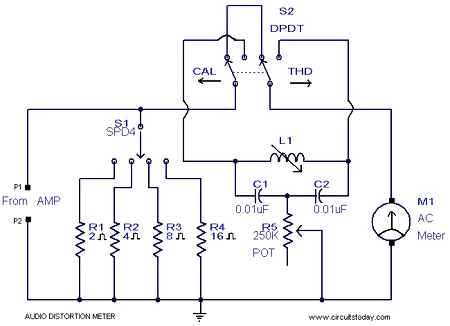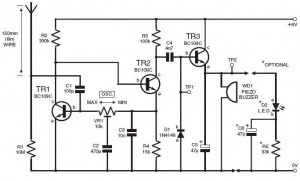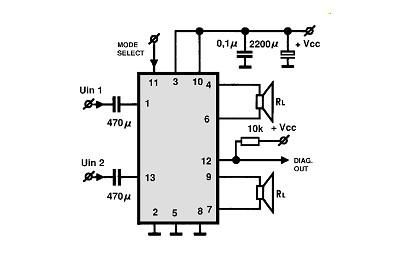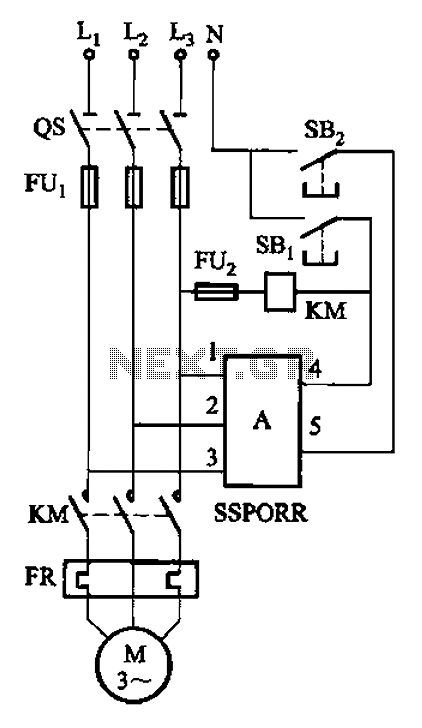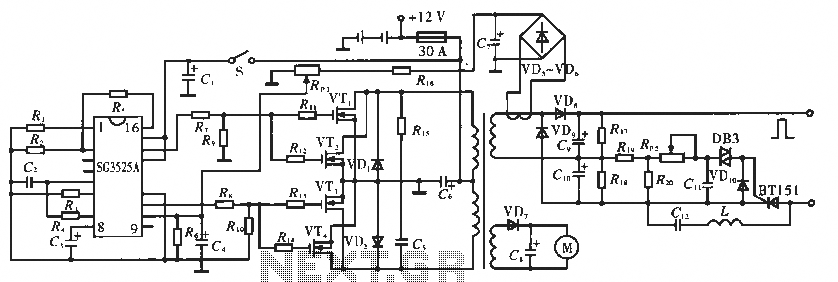
NiMh and NiCd Battery Charger Circuit
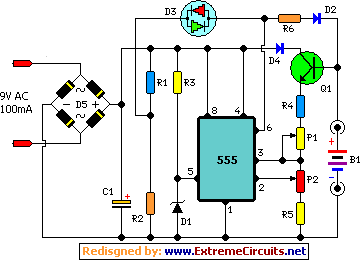
This automatic NiCd charger for 9V NiCd batteries utilizes the properties of a 555 timer and is straightforward to construct. The charger is designed to automatically maintain a full charge on the battery, allowing it to remain connected for extended periods without the risk of overcharging or discharging. The circuit configuration provided is compatible with both 6V and 9V NiCd batteries.
The circuit employs a 555 timer in astable mode to regulate the charging process. The timer generates a square wave signal that controls the charging current supplied to the battery. This method ensures that the battery receives a consistent charge without exceeding its voltage limits. The use of a resistor-capacitor (RC) network determines the frequency and duty cycle of the output signal, which can be adjusted to optimize charging times and efficiency.
In addition to the 555 timer, the circuit includes a few essential components: a diode to prevent reverse current flow, a voltage regulator to maintain the output voltage at a safe level, and a current sensing resistor to monitor the charging current. The diode protects the circuit from potential damage caused by reverse polarity connections, while the voltage regulator ensures that the battery is charged at a steady voltage, regardless of fluctuations in the input power supply.
For safety and reliability, it is advisable to include a thermal cutoff switch that disconnects the charger if the temperature exceeds a certain threshold, thus preventing overheating. Additionally, incorporating LED indicators can provide visual feedback on the charging status, indicating when the battery is charging and when it is fully charged.
Overall, this automatic NiCd charger is an efficient and user-friendly solution for maintaining 9V and 6V NiCd batteries, making it an ideal choice for various applications where battery management is crucial.This automatic NiCd charger for 9V NiCd batteries is using 555 timer properties and is very easy to build. Why is an automatic 9 volts NiCd battery charger? Because you can leave the battery for charging as much as you like: it will be always completely charged and ready for use when is needed.
It wont be overcharged and it will not discharge. With the values presented in the circuit diagram, the battery charger NiCd circuit is suitable for 6V and 9V batteries.. 🔗 External reference
The circuit employs a 555 timer in astable mode to regulate the charging process. The timer generates a square wave signal that controls the charging current supplied to the battery. This method ensures that the battery receives a consistent charge without exceeding its voltage limits. The use of a resistor-capacitor (RC) network determines the frequency and duty cycle of the output signal, which can be adjusted to optimize charging times and efficiency.
In addition to the 555 timer, the circuit includes a few essential components: a diode to prevent reverse current flow, a voltage regulator to maintain the output voltage at a safe level, and a current sensing resistor to monitor the charging current. The diode protects the circuit from potential damage caused by reverse polarity connections, while the voltage regulator ensures that the battery is charged at a steady voltage, regardless of fluctuations in the input power supply.
For safety and reliability, it is advisable to include a thermal cutoff switch that disconnects the charger if the temperature exceeds a certain threshold, thus preventing overheating. Additionally, incorporating LED indicators can provide visual feedback on the charging status, indicating when the battery is charging and when it is fully charged.
Overall, this automatic NiCd charger is an efficient and user-friendly solution for maintaining 9V and 6V NiCd batteries, making it an ideal choice for various applications where battery management is crucial.This automatic NiCd charger for 9V NiCd batteries is using 555 timer properties and is very easy to build. Why is an automatic 9 volts NiCd battery charger? Because you can leave the battery for charging as much as you like: it will be always completely charged and ready for use when is needed.
It wont be overcharged and it will not discharge. With the values presented in the circuit diagram, the battery charger NiCd circuit is suitable for 6V and 9V batteries.. 🔗 External reference
